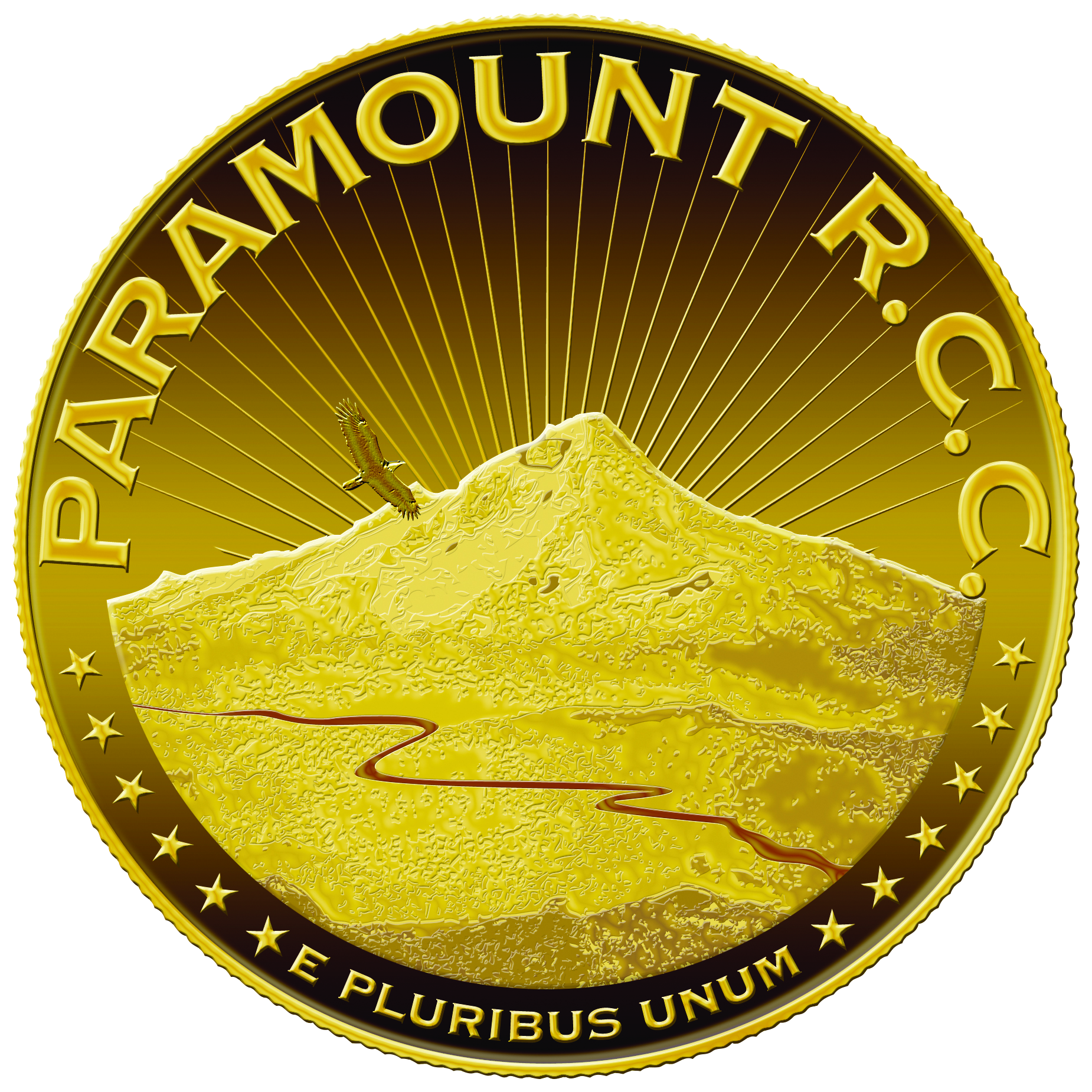Dahlonega Branch Mint Collection
1838-1861
Introduction
If a present-day collector sees a “D” mintmark, they automatically assume that it was struck in Denver. This was not always true, because before 1862, this mintmark meant something quite different. Dahlonega, in northern Georgia, began striking gold coins in 1838 and continued to do so until the work was ended by the Civil War. The story of this little-known mint began nearly two centuries ago.
Gold was first discovered in the Dahlonega region in the late 1820’s, America’s first Gold Rush to Georgia. Back then, the South was still a wild frontier with untamed forests, swamps, and the Cherokee Indians. Most of the mining camps in the south and the village of Dahlonega were connected to mint facilities in Philadelphia by nothing more than backwoods trails. There was no safe and easy way to move the heavy gold bullion to the U.S. Mint in Philadelphia. The journey was extremely dangerous! Crossing Indian territory, and hold ups by bandits, were all too common. Transportation fees were high, and if the several week journey from the gold fields was successful, the unrefined gold was converted into coins only to be returned back to the south through the same treacherous journey, and once again back to the miners so they could purchase goods and supplies.
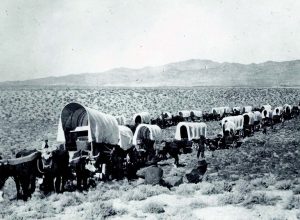
In the fall of 1830, a Georgia gunsmith, Templeton Reid, established a private mint. This was thought to be the answer for the miners, avoiding the costly and dangerous journey to Philadelphia. Templeton Reid started to coin gold pieces in three denominations, $2.5, $5, and $10. However, he was soon out of business, because his assays were unreliable, and the newspaper attacks made certain that everyone knew.
Reid’s mint and coinage were soon a dim memory, but the idea of a Federal mint in the gold region was not. At the same time, there was agitation in Charlotte, North Carolina for a similar institution. The lack of regional mint facilities in the south created an acute shortage of minted coins, severely limiting everyone living in the south. Powerful political forces soon backed the southern gold miners, and in March 1835, President Andrew Jackson signed into law a bill establishing not only the Dahlonega and Charlotte mints, but also one at New Orleans.
In far off Philadelphia, Mint Director Samuel Moore had tried to derail the legislative process through his friends in Congress, but in the end, found himself facing the inevitable. The facts of the matter were that it was far more dangerous to send the gold to Philadelphia to be coined, but regional pride dictated otherwise. Moore was so irritated after the bill’s passage, contributing to his decision to resign his post in June 1835, leaving it to his successor, Dr. Robert Maskell Patterson, to oversee the myriad of details connected with the new mints.
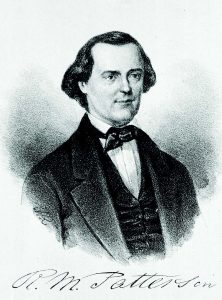 Dr. Robert Maskell chose Colonel Ignatius Few as local commissioner to oversee the construction of the new Dahlonega Mint, who had the correct political connections. The Colonel soon arranged for a spacious plot of ground in the town of Dahlonega, and contracts that were for the building, used plans drawn up by noted Philadelphia architect William Strickland. Of course, Mr. Strickland had his back against the wall from the get-go, as no one told him that brick was scarce in this region, and his plans called for the liberal use of this building material.
Dr. Robert Maskell chose Colonel Ignatius Few as local commissioner to oversee the construction of the new Dahlonega Mint, who had the correct political connections. The Colonel soon arranged for a spacious plot of ground in the town of Dahlonega, and contracts that were for the building, used plans drawn up by noted Philadelphia architect William Strickland. Of course, Mr. Strickland had his back against the wall from the get-go, as no one told him that brick was scarce in this region, and his plans called for the liberal use of this building material.
Dr Patterson, in mean time, arranged for the necessary machinery to be sent to Dahlonega when the building was ready to receive it. He ordered the latest technology, a steam coining press, as he felt the branch mints should have the best available. Once the machinery had been arranged, appointments for the branch mint offices were considered. The Superintendent’s office was political, and Joseph Singleton pulled the proper strings for the coveted position, but Patterson was able to name the coiner David Mason and the assayer Joseph W. Farnum. Mason, in particular, was a very skilled employee from the Philadelphia Mint and volunteered for Dahlonega.
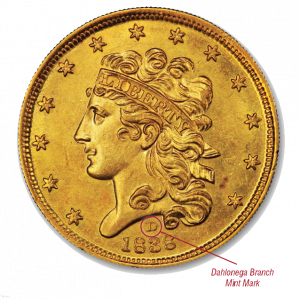 During February 1839, Dahlonega produced its first $2.5 quarter eagles. Due to little demand, only a mere 14,000 were struck for all of 1839. Today, the 1839-D $2.5 quarter eagles are a true prize, as only a small handful are left for collectors and investors to enjoy today. The 1839-D quarter eagle is a special coin for several reasons. It is the first quarter eagle from the mint, but it is also an overdate with all known pieces being 1839/8.
During February 1839, Dahlonega produced its first $2.5 quarter eagles. Due to little demand, only a mere 14,000 were struck for all of 1839. Today, the 1839-D $2.5 quarter eagles are a true prize, as only a small handful are left for collectors and investors to enjoy today. The 1839-D quarter eagle is a special coin for several reasons. It is the first quarter eagle from the mint, but it is also an overdate with all known pieces being 1839/8.
Unfortunately, the construction overseer, Colonel Ignatius Few lived over 50 miles away and did not bother to visit the site very often. By the fall of 1837, it was noticed that the building had severe structural problems. These problems were so serious, Franklin Peale was sent by Director Patterson to straighten out the troubles, which included basement walls that had fallen only a few weeks after being erected. To make matters worse, the contractor had apparently advertised for bungling workmen to do the roof because it had proven to be in even worse shape than the basement.
On February 12, 1838, Superintendent Singleton finally issued public notice that the Mint was open to the receipt of bullion. The first deposit was made on the 15th, but the assayer had to wait several days for sufficient amounts of gold to be brought to the Mint so he could begin the necessary operations. Although there was a delay before coiner Davis Mason received the ingots of gold, he was able to deliver 80 $5 half eagles on April 17,1838, the first of Dahlonega coinage.
In 1848 and 1849, many of the Georgia miners went to California to ply their trade, causing a drop in local deposits. This gave power to Patterson in hopes of abolishing the mint due to low mintages. However, when the miners returned from the west, they brought considerable quantities of gold with them, and they were loyal enough to deposit it in the home Dahlonega Mint, forcing coinage totals to go up once more.
In 1849, southern representatives in Congress were afraid that the Dahlonega and Charlotte Mints would indeed be abolished. They persuaded fellow legislators to create a one-dollar gold piece, which would help stretch the bullion being deposited. Although, it did not quite work out as intended, but the Dahlonega Mint produced tens of thousands of pieces, adding to its coinage numbers. The first gold dollars were struck in July 1849, and were very popular locally for some time. However, in January 1850, the Superintendent noted that the gold dollar was losing its novelty quickly.
The low mintages of the 1850’s created a number of rarities, including the coveted 1854-D three-dollar gold piece, also known as a $3 Indian Princess. Only a little over a thousand were struck in July 1854, and only a miniscule amount are known to have survived. The 1854-D $3 gold piece is one of only two branch mint issues for the series, with both, the New Orleans and Dahlonega issue being struck in 1854.
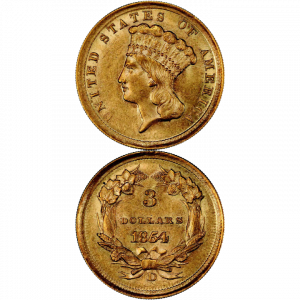
The late 1850’s was a time of genteel decline at the Dahlonega Mint. Coinage totals continued to drop, and the pressure to abolish this branch mint from Philadelphia officials grew. One indication of this was the amount of California gold being brought to the mint by returning miners, fell from $211,000 in 1854 to less than $20,000 for all of 1857-1861. The bullion deposits were so little that there were many months in those last years that had mintages so small, they were considered insignificant. In 1860-1861, there was an influx of gold from Colorado that kept the mint alive. It’s assumed that many Georgia miners who had returned from California, had gone to the Pike’s Peak Gold Rush of 1859, depositing roughly $60,000 of gold bullion in the Dahlonega Mint after 1859, breathing life back into the branch mint.
Little is known about the Dahlonega operations in 1861, as the last report to Philadelphia was made on February 28th. It is known that 1,597 half eagles were struck in the first two months. After that, there is little but conjecture. It is known that after March 1st, there were gold dollars struck, approximately 1,000 pieces, as well as two-three thousand additional half eagles, which were never reported to Philadelphia. The 1861-D Gold dollar is considered one of the great U.S. rarities known today. The 1861-D gold dollar is officially ranked as one the Top 100 U.S. coins, with a mere 80-100 pieces known today. The population total is known to be overly represented due to resubmissions by collectors and investors in hopes of an upgrade, creating a more valuable example.
Later, Georgia seceded from the Union and was operating under a mandate from the Congress of the Southern Confederacy. The southern branch mints closed on June 1, 1861, never to be reopened after the Civil War.
Dahlonega Branch Mint Collection 1838-1861
Collecting southern branch mint gold can be a tall task, but can be achieved with patience. Like all southern branch mint gold, Dahlonega gold coinage is favored the most. All issues are rare with some being exceptionally rare, but all have enjoyed appreciation over the years, making it one of the preferred safe havens for wealth, but also representations of the most historic times in our country’s history. Although most pieces are still affordable today, that will soon change as branch mint gold continues to be a major point of emphasis, thus price increases year after year are to be expected. The number of coin enthusiasts and investors in the numismatic world continue to grow due to mounting economic uncertainty, placing southern branch mint gold in the cross hairs as the go-to sector of U.S. coinage.

During its 24 calendar years of operation, the Dahlonega Mint produced just under 1.4 million gold coins, with a face value of over 601 million dollars. Dahlonega struck half eagles every year of operation, making a total of just 24 issues. Dahlonega quarter eagles were made continuously from 1839-1859, except for 1858, for a total of 20 different dates. Gold dollars were struck every year from 1849-1861, which constitutes 13 issues. The single emission of the $3 gold piece occurred in 1854. The 1854-D $3 gold piece is one of only two southern branch mint issues with the other being the 1854-O $3 struck at New Orleans. A complete set of Dahlonega gold coins consists of only 58 pieces. There are many ways to collect and invest in Dahlonega gold: the very popular 6-coin type set (example of each denomination and type), a complete series (consecutive date run of a particular denomination), to the most elaborate and difficult Dahlonega gold collection, a complete comprehensive Dahlonega collection consisting of an example of each coin issued of all denominations.
Popular Ways to Collect Dahlonega
Basic 3-Coin Dahlonega Gold Type Set
Simplicity is key when starting your Dahlonega Branch Mint gold collection. Throughout the Dahlonega gold collection, there are a number of different types inside of each series. The most basic form and achievable collection is the 3-coin type set. Collecting an issue of each denomination $1, $2.5, and $5, excluding the types, make it more affordable and can be completed with ease. Afterall, each Dahlonega issue is rare, so even the basic 3-Coin Dahlonega Gold Type Set is unmatched by its overall rarity in comparison to a Philadelphia, Denver, or San Francisco type set. Depending on the grade and date of issue, you can make it as prestigious as you want.
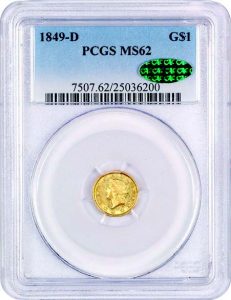
$1 Gold Piece
(Type I, Type II, or Type III) (1849-1859)
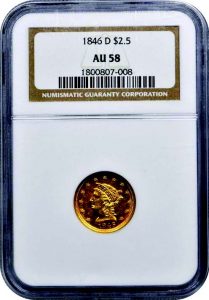
$2.5 Quarter Eagle
(1839-1860)
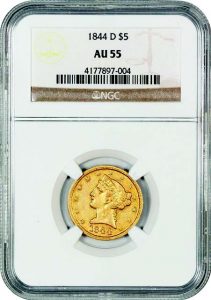
$5 Half Eagle
(1838-1861)
Full 10-Coin Dahlonega Gold Type Set
The 10-coin type set is of course more elaborate, consisting of one coin from each major denomination and design. The inclusion of the coveted 1854-D $3 Indian Head Princess makes the 11-coin type set. For most, collectors do not consider it part of the set. Being ranked in the United States Top 100 coins speaks for itself. Of course, it is extremely rare and simply unavailable at any given time. Over the years, Dahlonega gold is the most popular among the branch mints. Completing a Dahlonega gold collection is an achievement of a lifetime. All issues are rare, but the grade and date of issue can present great challenges. The inclusion of the 1854-D $3 Indian Head Princess will set any Dahlonega gold collection apart from the rest.
Gold Dollars
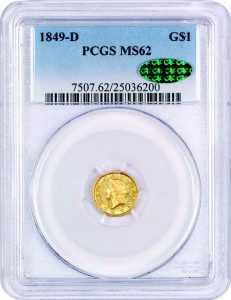
Type I $1 Gold Liberty Head
(1849-1854)
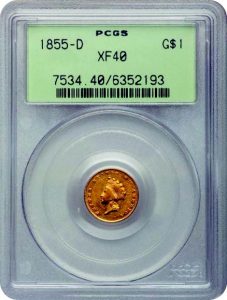
Type II $1 Gold Indian Princess, Small Head
(1855 only)
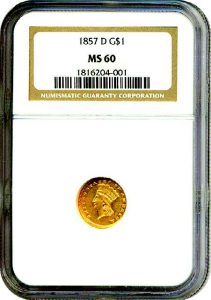
Type III Indian Princess, Large Head
(1856-1861)
$2.5 Quarter Eagles
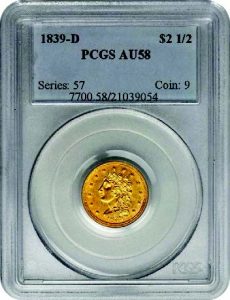
Classic Head Liberty
(1839 Only)
The only coin that bear the “D
mintmark on the obverse.
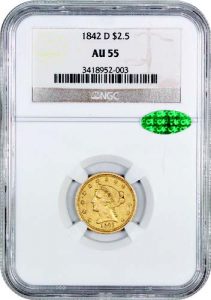
Liberty Head Small Date
(1840-1843)
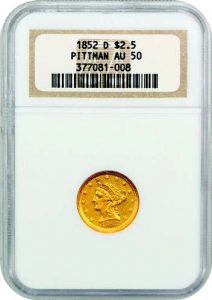
Liberty Head Large Date
(1844-1860)
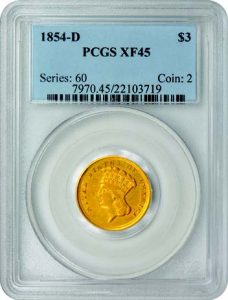
$3 Indian Head Princess
(Only 1854)
$5 Half Eagles
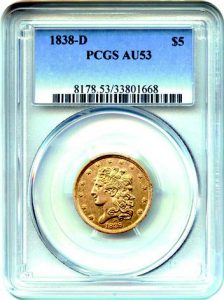
Classic Head Liberty
(Only 1838 Obverse mint mark)
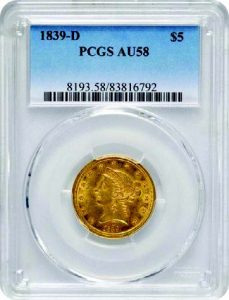
$5 Liberty Head
(Only 1839 Obverse mint mark)
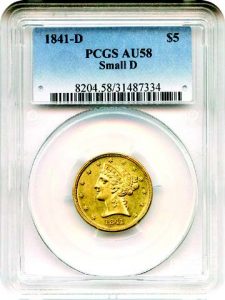
$5 Liberty Small Letters
(1840-early 1842)
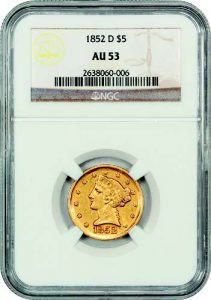
$5 Liberty Large Letters
(late 1842-1861)
